The Pros and Cons Of Shopify for Dropshipping In 2024
Shopify has emerged as a leading e-commerce platform, offering a robust solution for entrepreneurs looking to establish or expand their dropshipping businesses. But, what are the pros and cons of Shopify?
Does this platform have its dark side, just like its many bride sides?
This platform simplifies the online selling process with its comprehensive set of tools tailored for e-commerce success.
Also, aspiring and experienced merchants alike find that Shopify provides a conducive environment for managing product offerings, processing orders, and handling customer relationships.
However, sellers must weigh all factors against their specific business objectives and operational preferences.
So, as I dissect the Pros and Cons of Shopify, consider how each point aligns with your business strategy, your target market’s needs, and your personal goals as an entrepreneur.
Whether you’re just starting out or seeking to optimize an existing store, this exploration aims to equip you with the insights necessary to make a strategic decision about whether Shopify is the best fit for your dropshipping enterprise.
Table of Contents
Pros of Using Shopify for Your Dropshipping Business
Thus, when it comes to the pros and cons of Shopify, I will first list the positives.
Shopify has numerous advantages, especially for setting up and managing a dropshipping business.
Its user-friendly interface is one of its standout features, making it suitable for entrepreneurs with varying levels of technical expertise.
Beginners, in particular, find the drag-and-drop tools invaluable for seamless customization, allowing them to create professional-looking stores swiftly.
✅ User-Friendly Interface
Shopify empowers you to launch a fully operational dropshipping business rapidly.
Hence, even without extensive web design knowledge, the platform’s intuitive controls and pre-designed templates ensure your products are displayed attractively and effectively. Plus, using their drag-and-drop editor, you can customize your store quickly and easily.
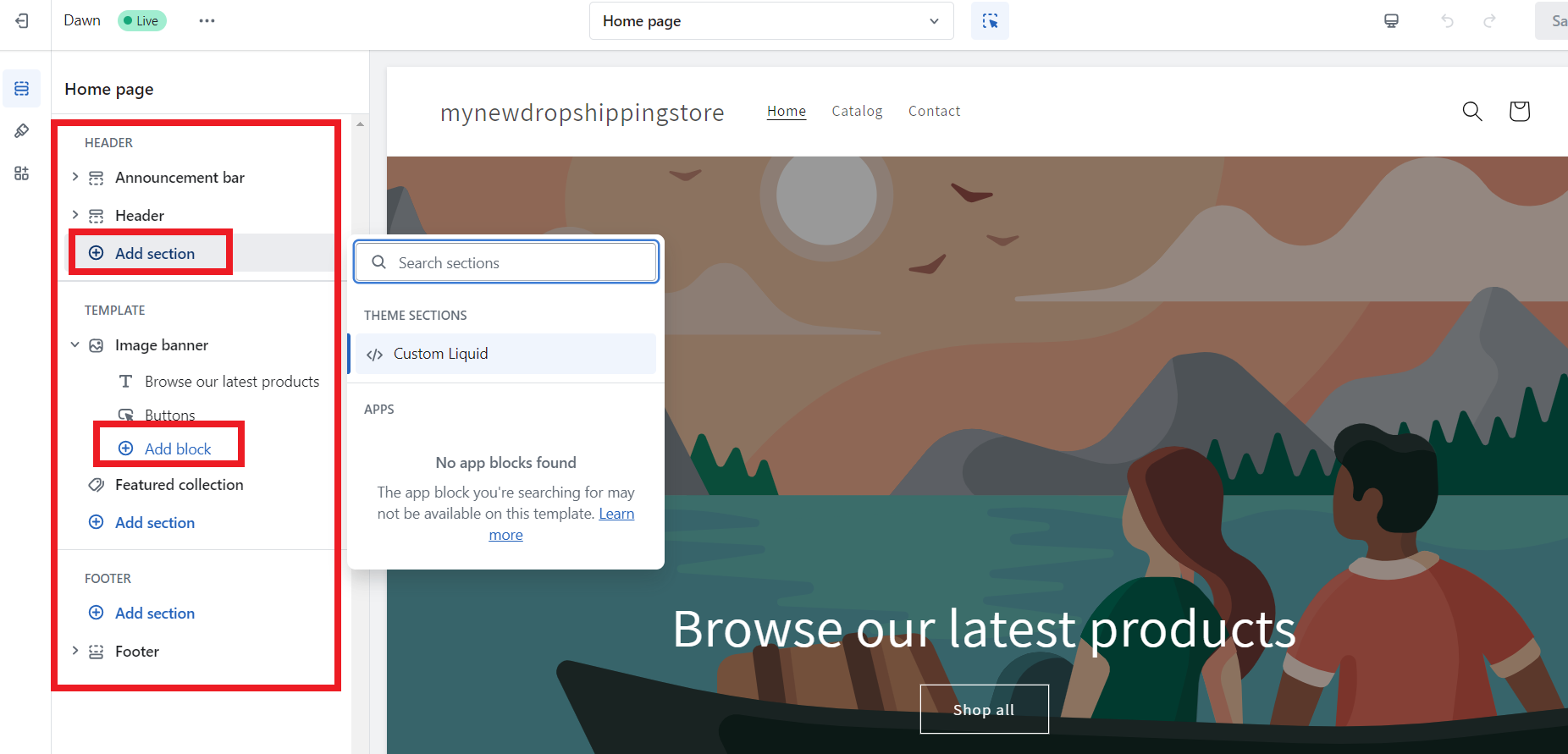
Example: “With Shopify, you don’t need to be a web design whiz to create a professional-looking store. Its user-friendly interface and pre-designed templates enable you to showcase your products in just a few clicks. I was able to launch my own dropshipping business within a day!”
✅ Wide Range of Themes and Templates
The aesthetic aspect of an online store plays a crucial role in attracting customers. Shopify’s broad selection of themes and templates allows for easy customization, aligning with your brand identity and creating a unique shopping experience.
👉 Learn How To Change Themes On Shopify: A Guide For Dropshippers.
In fact, the platform offers hundreds of customizable free and paid themes. Moreover, you can search them based on dropshipping niche, or sort by popularity, pricing, etc.
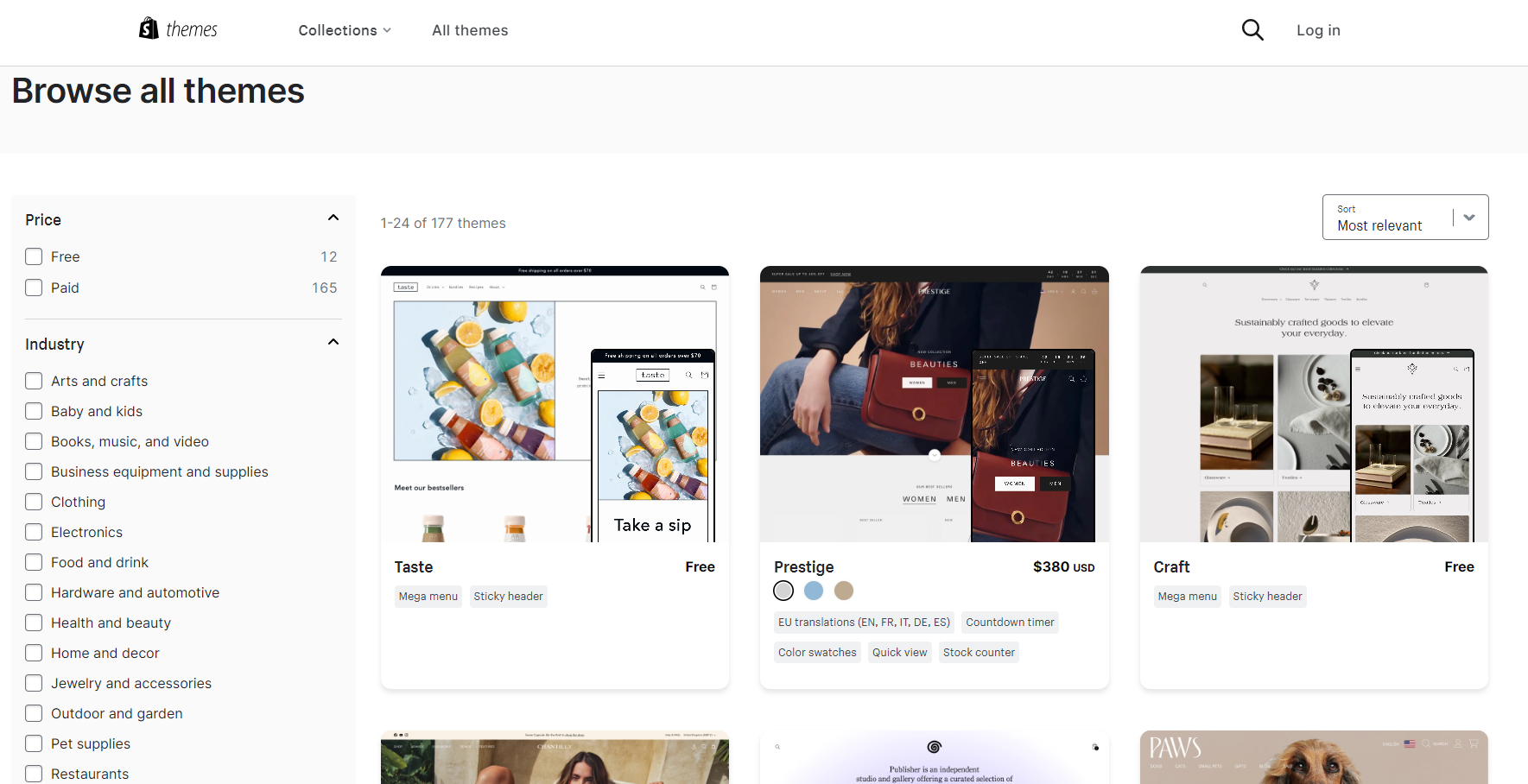
Example: “I love how Shopify offers a diverse range of themes that can be easily customized to match my brand identity. It helps me provide a cohesive shopping experience for my customers, which is crucial in the competitive world of dropshipping.”
💡 Tip: Check out the 11 Best Free Shopify Themes For Dropshipping Stores.
✅ Extensive App Store for Enhanced Functionality
The functionality of your store can significantly improve with the right apps. Shopify’s app store provides access to numerous third-party integrations designed to streamline inventory management, and order fulfillment, and enhance customer support.
So, since I am reviewing the pros and cons of Shopify, this one pops up as an important advantage.

Not to mention that the app store has over 520 apps specifically designed for dropshipping.
Example: “Thanks to Shopify’s robust app store, I was able to leverage advanced automation tools that streamlined my order fulfillment process. This not only saved me valuable time but also reduced the risk of errors associated with manual tasks.”
Hence, one Shopify integration I find very helpful is AutoDS which I personally use to find winning products and import them to my Shopify store.
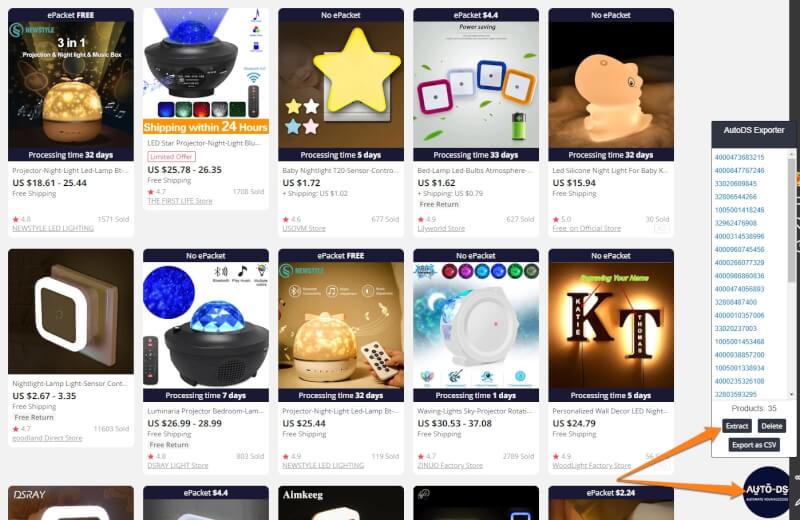
✅ Solid SEO Features to Improve Discoverability
Visibility is key in e-commerce, and Shopify’s SEO features are engineered to improve your store’s discoverability. Customizable meta tags and URL structures are just some of the tools available that can give your store an edge over competitors.
Moreover, you can even optimize your product pages for SEO with good keywords, meta descriptions, etc. Thus, you can access that in the bottom of the ‘Product page’.

Example: “I noticed a significant increase in organic traffic to my store after implementing Shopify’s SEO recommendations. It helped me outrank competitors and attract highly targeted visitors who were more likely to convert into paying customers.”
✅ Reliable Hosting and Security
Ensuring that your online store is accessible and secure at all times is paramount. Shopify delivers reliable hosting services coupled with SSL encryption technology, safeguarding both your business data and your customer’s personal information.
Plus, you have three options when it comes to domains and hosting: connect existing domains, use other third-party domains like GoDaddy, or buy Shopify Domain.
Hence, I am personally using the third option, i.e., buying a domain from Shopify. Of course, the choice is yours.
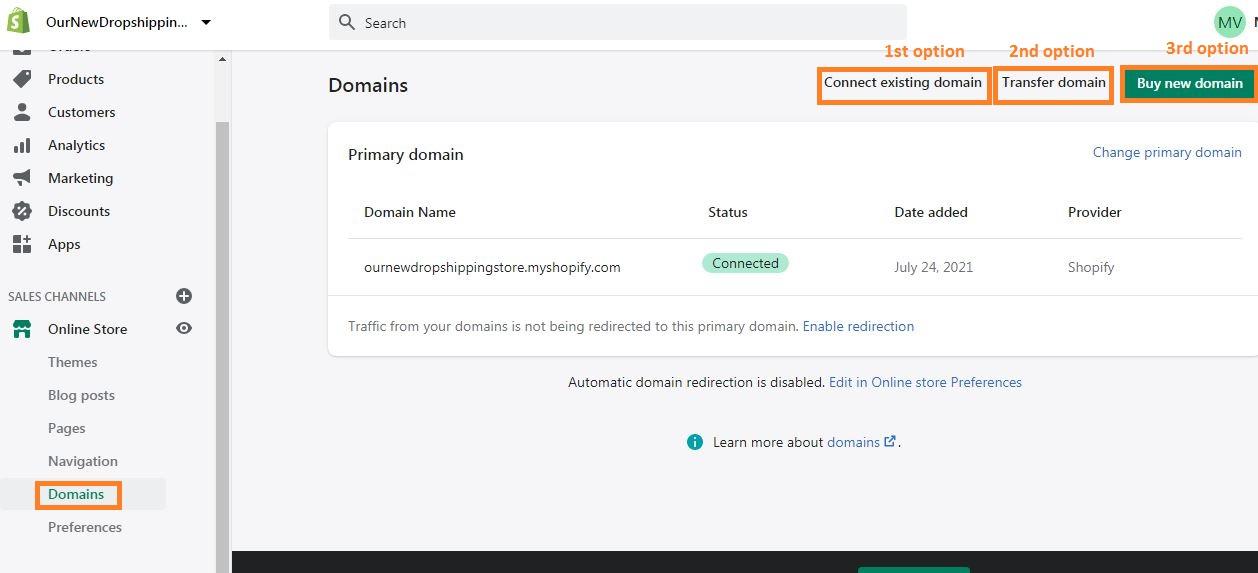
Example: “Security is a top priority for me as an online seller. With Shopify handling the technical aspects of data security, I can focus on growing my business with peace of mind, knowing that my customers’ sensitive information is safe from cyber threats.”
These benefits of using Shopify for dropshipping form the foundation for many successful online businesses today.
In fact, each feature plays its part in creating a robust environment where growth is not just possible but also supported by powerful tools tailored for e-commerce success.
Cons of Using Shopify for Your Dropshipping Business
When it comes to the pros and cons of Shopify, now is the time to check on the not-so-bright side.
❌ Potential for Higher Costs Due to Transaction Fees
Shopify’s platform is designed to be all-encompassing, offering its payment solution, Shopify Payments, which does not charge additional transaction fees.
However, this convenience isn’t universal. Sellers in regions where Shopify Payments isn’t available must resort to external payment gateways. These gateways come with their own transaction fees that can diminish profit margins.
Thus, here’s an overview of the transaction fees based on Shopify pricing plans:
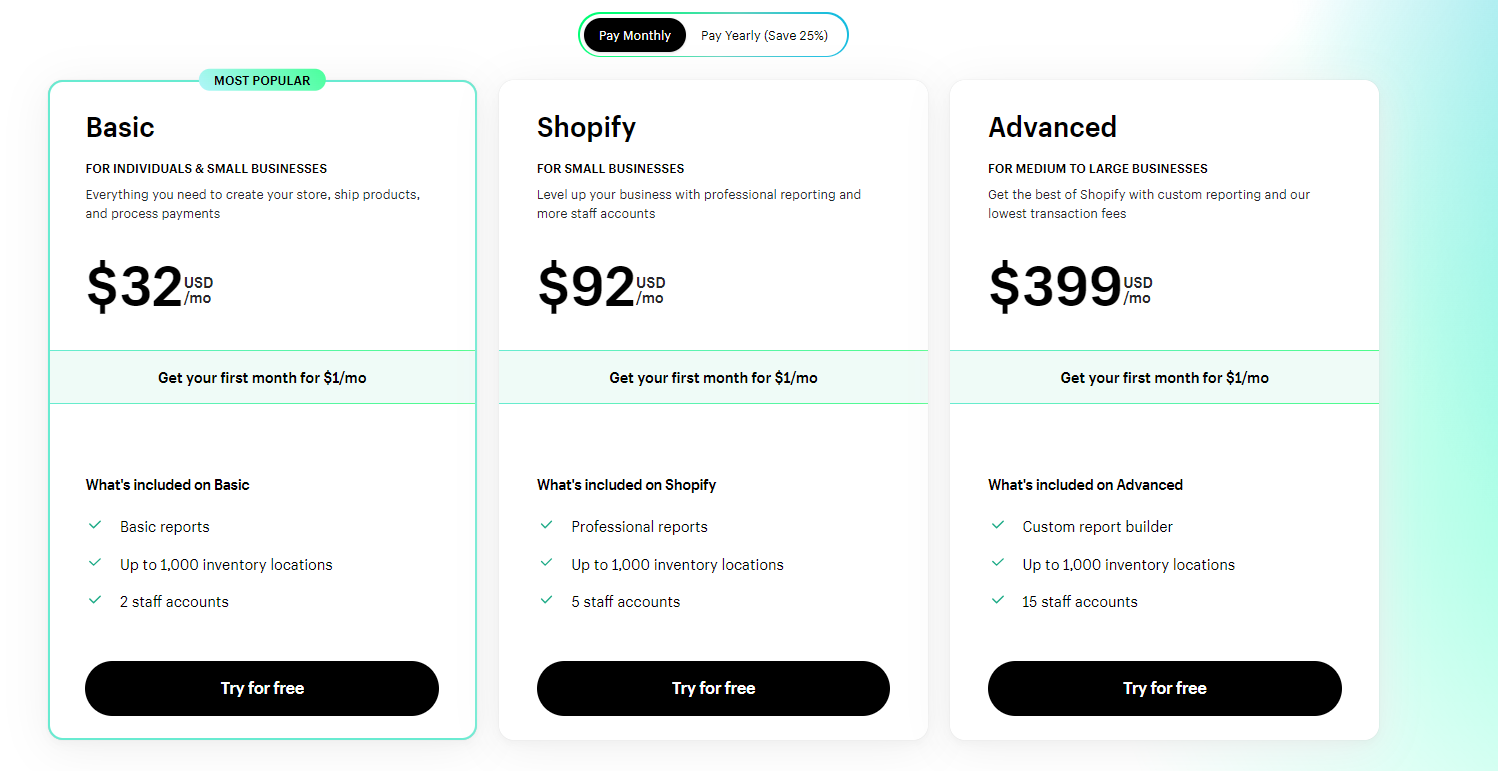
- Basic Shopify has a transaction fee of 2.9% + 30¢ per transaction. Furthermore, there is an extra 2% cost for each transaction if you use a different payment gateway than Shopify Payments.
- The Shopify Regular plan has a transaction fee of 2.4% + 30¢ per transaction. But, there is an extra 1% transaction fee if you use a payment gateway other than Shopify Payments.
- Advanced Shopify has a transaction fee of 2.4% + 30¢ per transaction. Also, the per-transaction cost is 0.5% while using a provider other than Shopify Payments.
- Shopify Plus has a lower transaction fee of 0.25%.
💡 Tip: Learn about Shopify Pricing Plans: What’s The Cost Of Dropshipping With Shopify?
Example: “While Shopify provides its own payment solution that waives transaction fees, it may not be available in certain countries where I primarily sell. As a result, I have to rely on third-party gateways and factor in the additional costs involved.”
👉 Learn How To Add Afterpay To Shopify: My 4-Step Guide + Examples.
❌ Dependency on Apps for Advanced Functionality
Shopify serves as a robust base for dropshipping operations, yet ventures requiring advanced features might incur extra costs. For example, implementing multi-currency pricing or A/B split-testing necessitates additional apps.
While these apps expand functionality, they also add recurring expenses and introduce the potential for technical complications.
Example: “I had to carefully evaluate the long-term costs and benefits of using multiple apps to extend Shopify’s capabilities. In some cases, I opted for custom development workarounds to avoid ongoing subscription fees.”
Thus, since I am talking about the pros and cons of Shopify, this disadvantage is no joke since it can lead to unexpected costs.
❌ Customer Support Limitations for Lower-Tier Plans
The level of customer support provided by Shopify can vary significantly based on your chosen plan.
Unfortunately, entry-level plans often place users further down the priority list for customer service assistance, which can lead to slower response times during critical moments of need.

For instance, here’s my overview of what they actually provide for each user:
- Basic Shopify:
- 24/7 customer support through email, live chat, and phone.
- Access to the Shopify Help Center.
- Shopify:
- All the features of Basic Shopify.
- 24/7 priority customer support.
- Advanced Shopify:
- All the features of Shopify.
- Advanced report builder.
- Third-party calculated shipping rates.
- Shopify Plus (Enterprise-level plan):
- Offers a dedicated support representative.
- Advanced and personalized support.
Example: “There were instances where I encountered technical issues with my store and had to wait for several hours before receiving a resolution from Shopify’s support team. This could be frustrating, especially during peak sales periods.”
Exploring Shopify Plus: Is It Worth the Investment for Your Dropshipping Business?

Shopify Plus is an enterprise-level e-commerce solution designed to cater to high-volume merchants. It offers a comprehensive suite of advanced tools that address the unique challenges faced by ambitious dropshippers.
“Designed for high-volume merchants, Shopify Plus offers a comprehensive suite of tools to tackle the unique challenges faced by ambitious dropshippers. Let’s take a closer look at what sets it apart.”
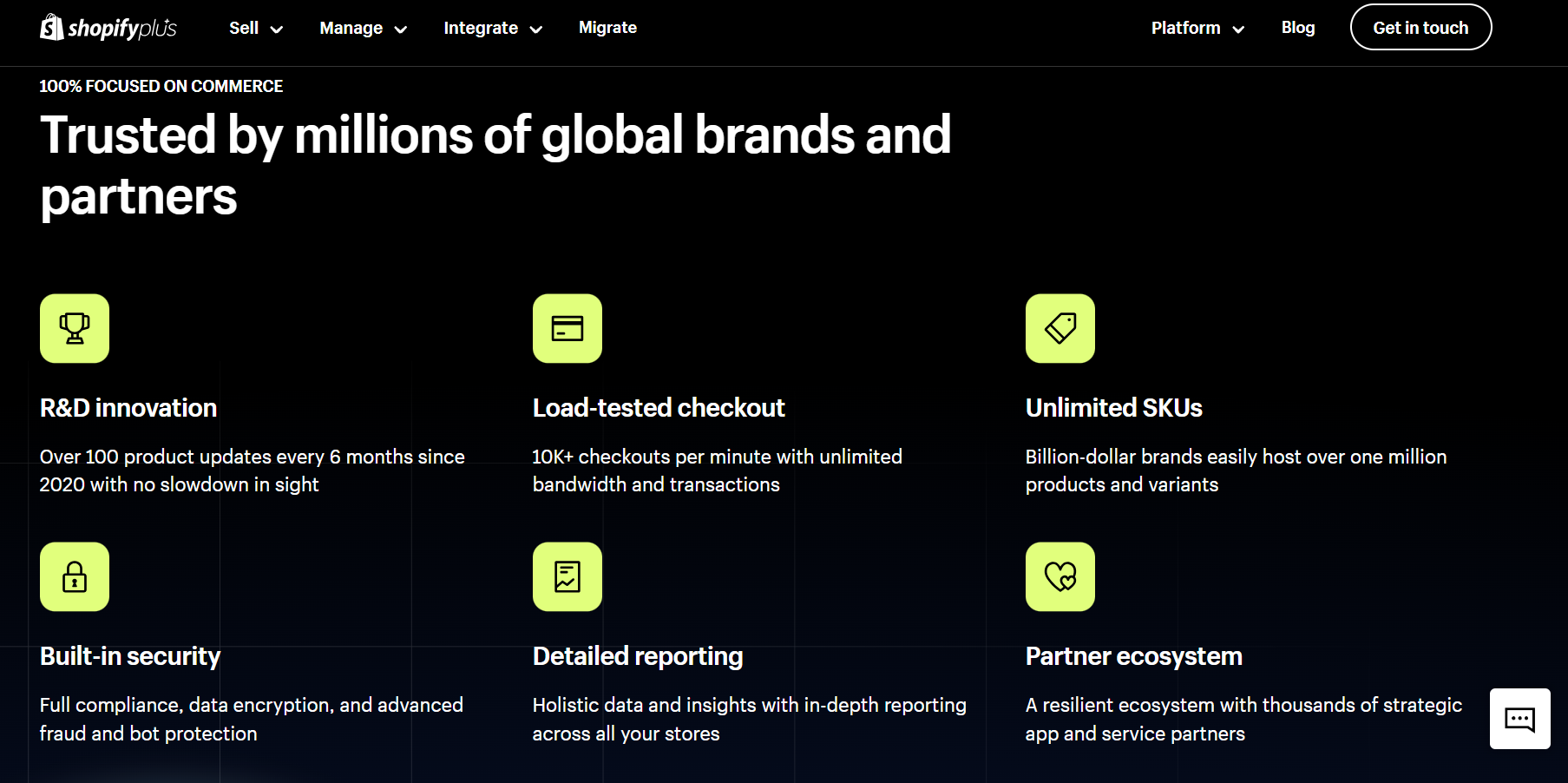
Hence, since I am talking about the pros and cons of Shopify, let’s see what you can benefit from when using Shopify Plus.
✅ Enhanced Scalability and Performance
“As my dropshipping business continued to grow rapidly, I knew I needed a platform that could scale alongside it. So, upgrading to Shopify Plus allowed me to effortlessly handle thousands of orders per day without any website slowdowns.”
✅ Advanced Customization Options
Unlike other platforms, Shopify Plus offers more flexibility in terms of design and functionality.
Hence, features like script editor and access to the platform’s underlying code provide merchants with unprecedented customization control.
“I was impressed by the level of customization control that Shopify Plus gave me. Moreover, it allowed me to implement unique checkout flows and experiment with personalized product recommendations, giving my store a competitive edge.”
✅ Negotiable Pricing Structure
Shopify Plus operates on a negotiated pricing model, where the monthly fee is tailored to match the specific requirements of each merchant. This flexibility in cost may be beneficial for businesses with a projected growth trajectory.
“While the upfront investment may seem daunting, I believe that the scalability benefits and dedicated support make Shopify Plus a worthwhile choice for ambitious dropshippers who are serious about taking their business to the next level.”
Shopify Plus stands as an option worth considering for large-scale dropshippers aiming for exponential growth. It offers a wide array of features designed for scalability and customization, which can prove to be quite beneficial in the long run.
Conclusion
Selecting Shopify for dropshipping involves a careful consideration of its strengths and limitations, tailored to the specific demands and aspirations of your business.
Shopify shines with its user-friendly design, SEO tools, and robust security, contributing to its status as a preferred platform among many dropshippers.
Yet, the potential added expenses from transaction fees and apps, along with varying levels of customer support, warrant a thorough cost-benefit analysis.
Keep in mind that the journey to a thriving dropshipping business extends beyond the choice of e-commerce platform. It encompasses:
- In-depth product research
- Crafting impactful marketing strategies
- Fostering strong customer relationships
For those seeking to delve deeper into maximizing Shopify for their dropshipping enterprise, Dropshipping.com offers comprehensive resources. This platform is a treasure trove of knowledge, equipped with how-to guides, product directories, and expert advice to support your ecommerce endeavors.













![The Top 21 3PL Companies Compared [2024 List & Guide]](https://images.weserv.nl/?url=https://prod-dropshipping-s3.s3.fr-par.scw.cloud/2024/03/Frame-3922469.jpg&w=420&q=90&output=webp)